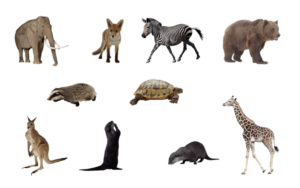Table of Contents
What is a living world? A living world is nothing but the world around us. It is an amazing diversity of living organisms.
Characteristics of living things:
- Growth
- Reproduction
- Tactile perception and environmental awareness
- Metabolism
- Self-organize
- Mortality
Biodiversity – Diversity in the Living World
The term “biodiversity” was first coined in the late 1980s and is a contraction of “biological diversity.” It refers to the variety of life on Earth and the variety of ecosystems that it supports. The Earth is home to an estimated 8.7 million species of plants and animals, which are constantly changing. The variety of life on Earth is due to the many different habitats, from the coldest regions of the Arctic to the hottest regions of the tropics.
Biodiversity is also affected by many different environmental conditions, including temperature, rainfall, light, and soil type. The variety of life on Earth is also affected by the many different human activities, including land-use changes, pollution, and the introduction of non-native species.
The loss of biodiversity is a major global concern, as it can affect ecosystems’ stability and the services they provide. Ecosystem services include the provision of clean water, the regulation of climate, and the provision of food.
The loss of biodiversity can also hurt human health and well-being. For example, the loss of pollinators, such as bees, can hurt the production of crops. The loss of coral reefs can hurt the health of coastal communities, as they provide a valuable source of food and income.
The conservation of biodiversity is, therefore, a critical global priority. There are many ways to promote biodiversity conservation, including establishing protected areas, promoting sustainable agriculture, and reducing pollution.
The Living World – Essentials, Characteristics, and Important FAQs: Essentials of the Living World
Taxonomic Categories
Taxonomic categories are the divisions of organisms that scientists use to organize and study living things. The most fundamental taxonomic category is the species, the group of organisms that can mate and produce fertile offspring. Other categories include the genus, a group of species that share common characteristics, and the family, a genus with common characteristics. Taxonomic categories can be further subdivided, and scientists often use various classification systems to organize living things.
NCERT Solutions for Class 11 Biology Chapter 1: The Living World: Class 11 Biology ch 1
It depicts the rank or level in the hierarchical arrangement in ascending order. The seven mandatory categories as listed below:
Kingdom > Division > Class > Order > Family > Genus > Species
- Kingdom – includes different phyla of animals and different plant divisions.
- Division/Phylum – incorporates related classes as a division in plants and phylum in animals
- Class – Many orders related to each other are incorporated into a class.
- Order – includes a few related families
- Family – it is an assembly of related genera
- Genus – a gathering of related animal categories having similar characters
- Species – the essential unit in classification, species refers to the individuals from any animal group that is firmly related, obtained from a typical ancestor, which can interbreed to produce offsprings that are fertile themselves.
Looking for NEET Coaching center in India: Best Online Coaching for NEET

The Living World’s Essentials
- The components are, in essence, the necessities of life. The following is a list of all the components required to keep the living world afloat.
- Water: The human body has 70-90 per cent water content. It is necessary for the continuation of certain biological processes.
- Oxygen: Oxygen makes up about 20% of the Earth’s atmosphere. It is required to produce energy during aerobic respiration, which is necessary for various metabolic activities.
- Sodium Chloride: In its ionic state, sodium chloride plays a crucial role in the human body’s metabolic process.
- Proteins are lengthy chains of amino acids linked together by peptide bonds. It is crucial in the formation of the organism’s structure.
FAQs
Question: Make a note about the Binomial Nomenclature system.
Answer: The notion of giving known creatures scientific names is broadly accepted. The generic name (genus) and the specific epithet are the two portions or components of each binomial name (species). Carolus Linnaeus developed this nomenclature scheme.
The following are the universal rules of nomenclature:
- Biological names are typically written in italics and Latin.
- The genus represents the first word in a biological or scientific name, whereas the second word represents the specific epithet.
- Both words in a biological name are underlined separately when handwritten.
- The genus name is written in capital letters, and the specific epithet (species name) begins with a small letter.
Define the term diversity in the context of the living world.
Plants, animals, and other living beings number in the millions and billions. Thousands upon thousands remain unidentified. To identify and describe them, biologists use their own set of procedures. They have a set of similarities and differences in common.







